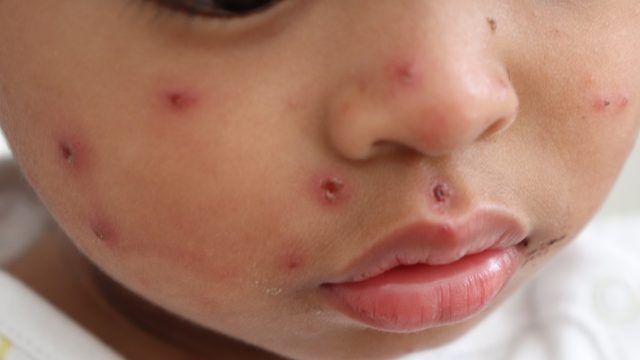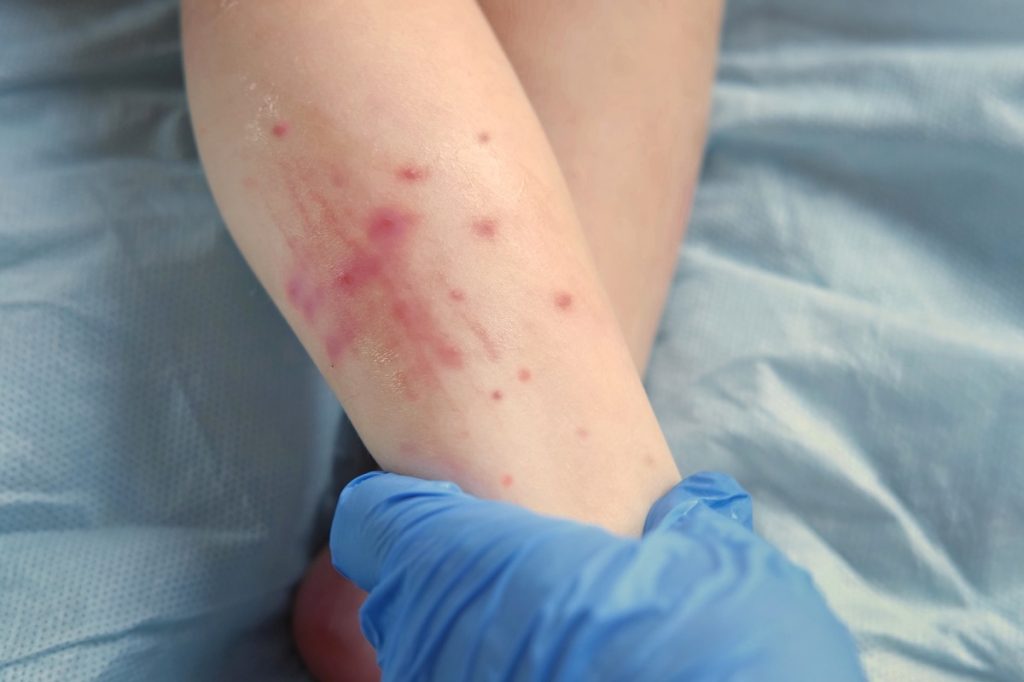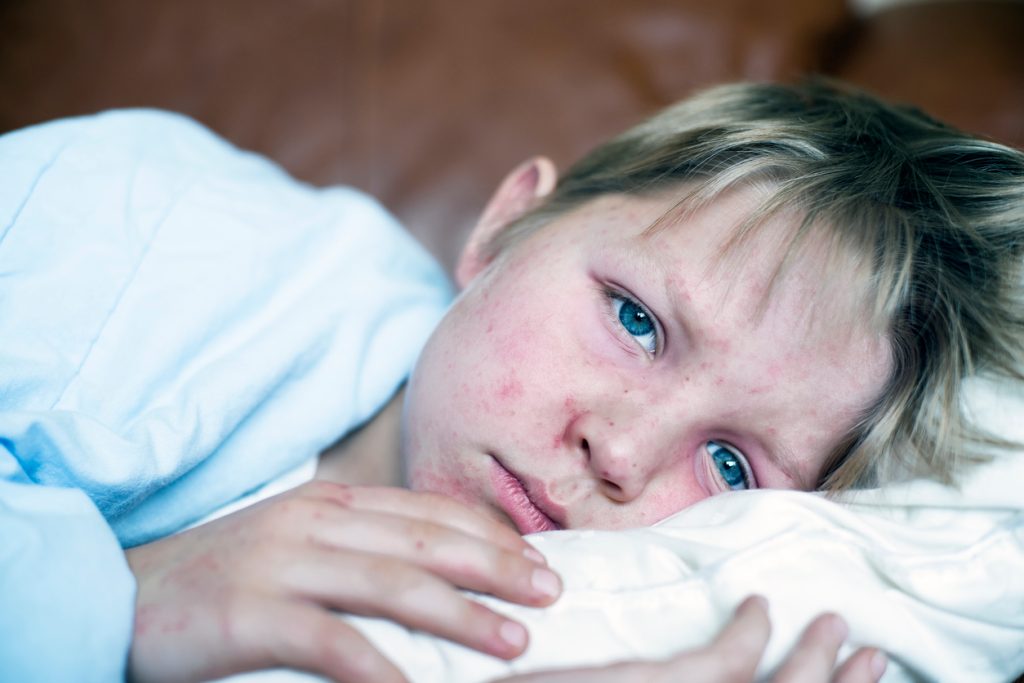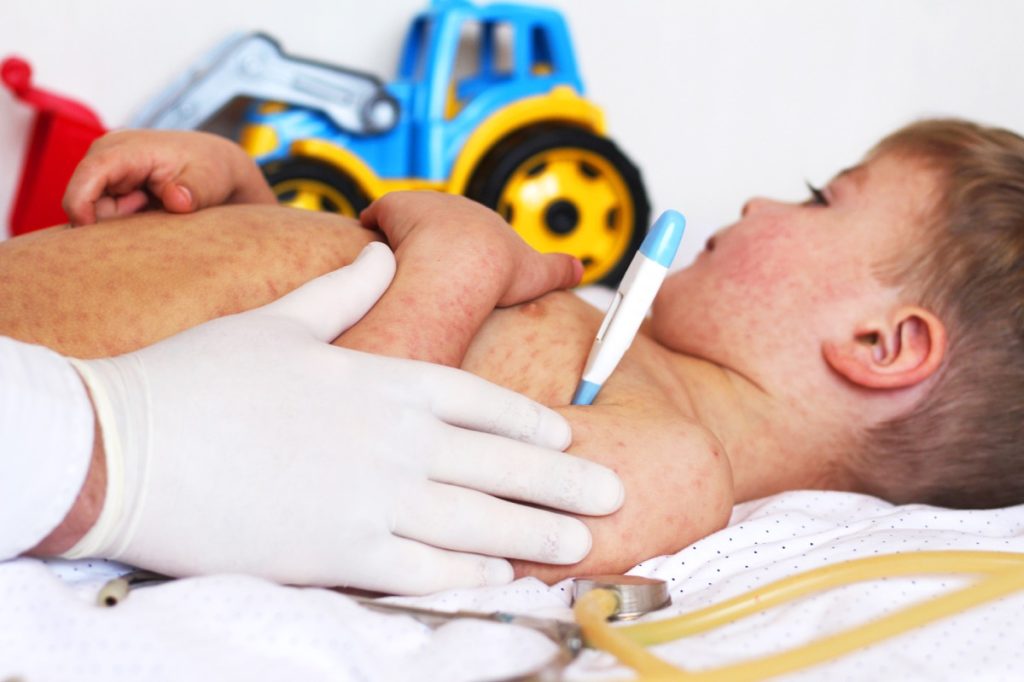Measles Now Spreading in 9 States Amid “Staggering” Outbreak, CDC Warns

Living in a post-COVID-19 pandemic world has made us all a little more aware of viruses and other ailments that begin to infect an increasing number of people or reach new areas. Fortunately, health officials are tasked with spotting any troubling trends or developing crises so we can work to stop them from growing into a full-blown emergency. One of the latest emerging issues is measles, which is now spreading in nine states amid what the Centers for Disease Control and Prevention (CDC) calls a “staggering” outbreak. Read on to see which places have seen reported cases and why the once-beaten viral foe is coming back.
RELATED: Listeria Outbreak Has Hit 11 States—These Are the Warning Signs of Listeriosis.
Measles cases are starting to spike in the U.S.

In recent decades, measles has become something of a distant memory for most people after it was officially declared eliminated in the U.S. at the turn of the millennium. However, the virus can still bubble back up when international travelers get infected and return stateside with the virus in their system, per the CDC.
Now, health officials have become concerned about a burgeoning domestic outbreak. In an emergency alert issued on Jan. 25, the CDC warned that it had been informed of at least 23 confirmed measles cases since Dec. 1, including two outbreaks with more than five related infections each.
Unfortunately, the rising cases aren’t just limited to the U.S. A report from the World Health Organization (WHO) released in Dec. 2023 said it had seen an “alarming” jump in measles cases within Europe, rising from less than 1,000 the previous year to more than 30,000 in 2023. The number of countries with significant outbreaks also leapt from 32 in 2022 to 51 last year, NPR reports.
RELATED: COVID JN.1 Now Accounts for 86 Percent of Cases—These Are the Symptoms.
The dropping vaccination rate could be playing a part in the latest increase.

In its latest alert, the CDC said that most of the reported cases in the latest outbreak were “among children and adolescents who had not received a measles-containing vaccine (MMR or MMRV), even if age eligible.” The agency has found that existing shots for the highly contagious virus are 97 percent effective at preventing infection when both doses are administered.
According to WHO data, roughly 61 million measles vaccine doses were missed in 2021, NPR reports. And the rate of children receiving at least one dose of the vaccine before turning one sank to its lowest level since 2008.
As a result, some health officials have theorized that lack of vaccination is likely the root cause of the latest case surges.
“The increase in measles outbreaks and deaths is staggering, but unfortunately, not unexpected given the declining vaccination rates we’ve seen in the past few years,” John Vertefeuille, director of CDC’s Global Immunization Division, said in a statement.
RELATED: 4 New Vaccines You Need This Year, CDC Says in New Warning.
Nine states have reported measles cases during the outbreak.

In addition to growing in number, measles cases have also been spreading to new areas lately. So far, CDC and local health department data shows there have been nine states with reported cases as of Feb. 7, USA Today reports.
At least one case has been reported each in California, Georgia, Maryland, Missouri, New Jersey, and Ohio. Washington State has so far seen three cases.
Meanwhile, Pennsylvania has recorded nine confirmed cases, including eight in Philadelphia. And Delaware has seen 20 to 30 cases in New Castle County, per USA Today.
Measles symptoms sometimes are difficult to spot.

While numbers in the U.S. still remain low overall, the CDC urges doctors to be on the lookout for any signs of measles. The agency says symptoms typically show up seven to 14 days after someone becomes infected, typically beginning with a high fever, cough, runny nose, and watery eyes. Some patients can also develop Koplik spots—which are tiny white dots in the mouth—two to three days after signs of illness first arrive.
The notorious rash most people associate with measles can begin to develop three to five days after other symptoms start. It typically first appears as red dots on the face and at the hairline before it spreads down the neck, torso, arms, legs, and feet, per the CDC.
The agency urges anyone who thinks they or their child have been exposed to measles to call their healthcare provider immediately. And preventative steps are still seen as key in the fight against the virus.
“Vaccination is the only way to protect children from this potentially dangerous disease,” Hans Henri P. Kluge, MD, WHO’s regional director for Europe, said in the agency’s statement. “Urgent vaccination efforts are needed to halt transmission and prevent further spread. It is vital that all countries are prepared to rapidly detect and timely respond to measles outbreaks, which could endanger progress towards measles elimination.”
Best Life offers the most up-to-date information from top experts, new research, and health agencies, but our content is not meant to be a substitute for professional guidance. When it comes to the medication you’re taking or any other health questions you have, always consult your healthcare provider directly.
RELATED: For more up-to-date information, sign up for our daily newsletter.
- Source: CDC: Global Measles Outbreaks
- Source: CDC: Stay Alert for Measles Cases
- Source: WHO: Global measles threat continues to grow as another year passes with millions of children unvaccinated
- Source: WHO: A 30-fold rise of measles cases in 2023 in the WHO European Region warrants urgent action
- Source: CDC: Vaccine for Measles
- Source: CDC: Measles Signs and Symptoms